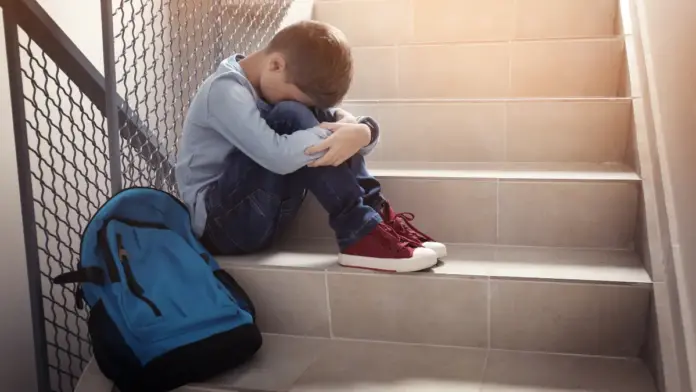In our interconnected world, conflicts are inevitable. Whether it’s in the workplace, schools, or even within families, clashes of opinions, interests, and personalities are bound to happen. However, not all conflicts are created equal. While some may arise from misunderstandings or differences in perspective, others may stem from a more insidious root: bullying behavior.
Understanding the distinction between normal conflicts and bullying behavior is crucial for creating healthy environments where individuals feel safe and respected. Let’s delve into what sets them apart and how to recognize the signs.
Defining Normal Conflicts and Bullying Behavior
Normal conflicts are a natural part of human interaction. They occur when individuals have differing opinions, needs, or goals, leading to tension or disagreement. These conflicts are typically temporary and can often be resolved through communication, compromise, or mediation.
On the other hand, bullying behavior involves repeated, intentional aggression or intimidation directed towards another individual who perceives themselves as being unable to defend themselves. Bullying behavior is characterized by a power imbalance, where the perpetrator seeks to exert control or dominance over the victim. Unlike normal conflicts, bullying behavior is not about resolving differences but rather about exerting power and causing harm.
Recognizing the Signs of Bullying Behavior
Identifying bullying behavior requires keen observation and an understanding of its various manifestations. Here are some common signs to watch out for:
- Repeated Aggression: One of the hallmarks of bullying behavior is its repetitive nature. Bullies often target the same individual repeatedly over time rather than engaging in isolated incidents of conflict.
- Power Imbalance: Bullying behavior typically involves a power imbalance, where the perpetrator holds some form of power or perceived superiority over the victim. This could be physical strength, social status, or authority.
- Intentional Harm: Unlike normal conflicts, where the goal may be to resolve differences or assert one’s position, bullying behavior is primarily focused on causing harm or distress to the victim. This harm can be physical, emotional, or psychological.
- Lack of Remorse: Bullies often lack empathy or remorse for their actions. They may justify their behavior or dismiss the impact it has on the victim, showing little to no concern for the consequences of their actions.
- Isolation and Exclusion: Bullies may use tactics such as social exclusion or spreading rumors to isolate their victims from their peers. This further reinforces the power imbalance and increases the victim’s sense of vulnerability.
- Cyberbullying: In today’s digital age, bullying behavior has extended into online spaces through cyberbullying. This includes harassing or threatening messages, spreading rumors or embarrassing photos/videos, and other forms of online aggression.
Differentiating Between Normal Conflicts and Bullying Behavior
While conflicts and bullying behavior may share some similarities, there are key differences that can help distinguish between the two:
- Intent: In normal conflicts, the intent is typically to address differences or resolve issues, even if the approach may be confrontational. In bullying behavior, the intent is to exert power and control over the victim, with little regard for resolution or reconciliation.
- Frequency and Duration: Normal conflicts are often isolated incidents that occur sporadically and may be resolved relatively quickly through communication or mediation. Bullying behavior, on the other hand, is characterized by repeated incidents targeting the same individual over an extended period.
- Power Dynamics: Normal conflicts may involve a disagreement between equals, where neither party holds a significant power advantage over the other. In bullying behavior, there is a clear power imbalance, with the perpetrator exerting control over the victim through intimidation or coercion.
- Impact on the Victim: While conflicts can be upsetting or stressful, they typically do not result in lasting harm to the individuals involved. In bullying behavior, the victim often experiences significant emotional distress, trauma, and potential long-term consequences such as anxiety, depression, or academic/workplace difficulties.
Addressing Bullying Behavior
Recognizing and addressing bullying behavior is essential for creating safe and inclusive environments. Here are some steps to take if you suspect bullying behavior:
- Listen and Support: If someone confides in you about being bullied, listen to them without judgment and offer your support. Let them know they are not alone and their feelings are valid.
- Document Incidents: Keep a record of any bullying incidents, including dates, times, and details of what occurred. This documentation can be helpful if further action is needed.
Report to Authorities: If the bullying behavior is occurring in a school or workplace setting, report it to the appropriate authorities, such as teachers, supervisors, parents or HR personnel. They can investigate the situation and take appropriate disciplinary action.
- Encourage Empathy and Respect: Promote empathy and respect within your community or organization by fostering open communication, conflict resolution skills, and a culture of inclusivity.
- Seek Professional Help: If the bullying behavior is severe or persistent, consider seeking help from a mental health professional who can provide support and guidance for both the victim and the perpetrator.
Conclusion
While conflicts are a normal part of human interaction, bullying behavior represents a more harmful and destructive form of aggression. Understanding the differences between normal conflicts and bullying behavior and taking proactive steps to address them can create safer and more supportive environments for everyone. Let’s work together to promote empathy, respect, and kindness in our online and offline communities.
Remember, bullying behavior is never acceptable, and we must stand up against it and support those affected.



